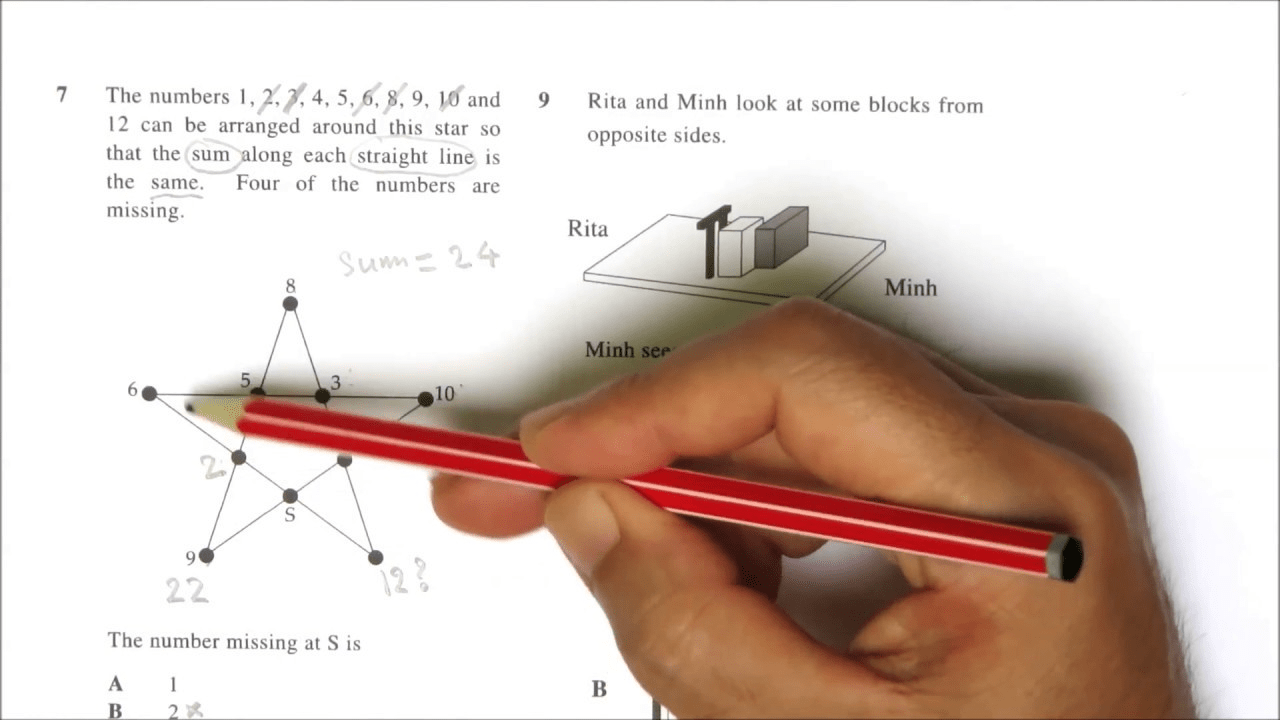ASS scholarship test, If you are considering enrolling your child in a scholarship program or have already done so, you may be informed that they will need to sit for an Academic Assessment Services (AAS) scholarship test.
AAS is one of the three major exam providers in Australia, alongside ACER and Edutest. Scholarship programs provide financial assistance to parents by offering a reduction in tuition fees, typically ranging from 20-100%.
This makes it possible for students to attend some of the most prestigious schools in the country, providing them with a unique opportunity and advantage.
To gain a scholarship, students must participate in a competitive exam. While schools may be capable of creating their own assessments, many prefer to outsource the testing to companies like AAS due to their expertise and experience.
These exams are more comprehensive than typical school achievement tests and consist of four separate tests.
The first test is Reading Comprehension, which contains 40 questions to be answered within 45 minutes. The second test is Abstract Reasoning & Problem-Solving, with 40 questions to be completed in the same time frame.
The third test is Mathematics Achievement & Reasoning, also consisting of 40 questions to be completed in 45 minutes. Finally, the Writing test involves a single writing prompt to be completed within 25 minutes.
The AAS scholarship test consists of four parts:
- Abstract Reasoning and problem-solving,
- Mathematics achievement and reasoning,
- Reading Comprehension
- Written Expression.
Each of these parts is designed to evaluate the specific skills and knowledge of the student.
Abstract Reasoning and Problem-Solving AAS Scholarship Test
The test consists of 60 multiple-choice questions and has a time limit of 40-45 minutes. Each question should be answered within approximately 40-45 seconds.
The test assesses the ability to reason and analyze information using verbal, mathematical, figural, and spatial concepts. The test may include questions related to verbal reasoning, abstract reasoning, and numerical reasoning.
Verbal reasoning questions are focused on pattern detection using words and language, which may include decoding a code in a foreign language, identifying odd words, finding words with the closest meaning, making a different word by adding or removing a letter, logical-consequence-based on a statement, and if & and statements. A broader vocabulary range can make verbal reasoning questions easier to answer.
Abstract reasoning questions require problem-solving abilities by looking at images or pictures. For example, you may need to identify which image doesn’t belong, which image should be added, or what the next image in a series is.
Numerical reasoning questions require application and problem-solving abilities using math and numbers.
The test may ask you to find number patterns or solve problems that involve simple addition, subtraction, multiplication, or division. The challenge is figuring out what mathematics to use, how to use it, and when to use it to solve the question.

ASS scholarship
Mathematics Achievement and Reasoning of ASS Scholarship Test
Academic Assessment Services states that maths tests for primary and junior secondary students evaluate both curriculum-related mathematics tasks and mathematical reasoning tasks.
Meanwhile, middle and senior secondary students are assessed primarily on their mathematical reasoning skills, which are distinct from those developed through curriculum-based mathematics and instead prioritize problem-solving abilities.
As a result, Year 7 maths exams require students to apply what they’ve learned in the classroom to solve more complex, real-world problems.
While these exams may incorporate basic mathematical operations like addition, subtraction, multiplication, and division, students must demonstrate their ability to use these skills strategically and contextually.
In fact, a student’s ability to reason through mathematical problems is more heavily weighted in the exam’s scoring system. For example, a typical Year 7 maths question might ask something like, “If a person’s age is twice that of another person’s now, what will their respective ages be in 10 years?”
Fortunately, there are specific strategies and techniques students can learn to help them excel in these exams. By developing their mathematical reasoning skills and applying them to a wide range of problems, students can perform well on Year 7 maths tests and lay the foundation for future academic success
Reading Comprehension AAS Scholarship Test
The test includes 45 multiple-choice questions and has a time limit of 40-45 minutes. Students are required to read a variety of texts, including non-fiction and fiction, and answer questions based on the information presented.
The questions are designed to assess the student’s ability to interpret, infer, and synthesize information from the text. Higher marks are awarded for the more difficult questions, which require the student to use logical reasoning and draw conclusions based on incomplete information.
Written Expression AAS scholarship Test
A comprehensive guide on how to approach writing tasks for scholarship selection, emphasizing the importance of several key factors that are essential for success.
Firstly, originality is crucial, and students should strive to create unique storylines or structures that stand out from the rest. However, they must also plan their writing carefully to fit within the time limit of 25 minutes provided. Exam Success provides a set structure for persuasive and narrative writing, which students have used to win scholarships.
Secondly, students must ensure that their writing is directly related to the stimulus or question they are given. This could be an image, a statement, or both. Students who fail to do this risk receiving a nil mark. It’s crucial to avoid memorizing essays beforehand, but students should practice a lot and have ‘backup’ sentences ready.
Thirdly, fluency and strong control of syntax are critical, and students should write clear sentences that are in order and easily understood. For example, instead of writing “Yesterday, I will eat dinner,” they should write “Yesterday, I ate dinner.”
Lastly, grammar and vocabulary are crucial, and students must select words carefully to enhance their writing. Using big words incorrectly or in the wrong context can result in lost marks, as can misspelling words. Poorly chosen words can also lead to lost marks. Therefore, it’s essential to remember that simplicity is often better, and using a simple phrase like “A number of reasons why” is better than a more complex phrase like “A plethora of reasons why.”
By following these guidelines, students can improve their chances of success in scholarship selection, as they showcase their higher skills beyond basic spelling and grammar.
The scholarship test places a strong emphasis on reasoning skills rather than curriculum, which means that preparing for the test requires a focus on logical reasoning.
Many parents may not be familiar with this area of study, but logical reasoning is a field that can be learned, and it falls under the branch of philosophy known as logic.
Our courses and test questions are designed by an expert in the field who has a background in philosophy and has studied logical reasoning under a professor of logic at the prestigious University of Melbourne.
Why should you apply for a high school academic scholarship?
There are several compelling reasons why a high school student should consider applying for an academic scholarship:
- Financial assistance: Academic scholarships can provide financial assistance to students who may not otherwise be able to afford the cost of attending a private school or university. Scholarships can help cover tuition fees, books, accommodation, and other expenses.
- Recognition and prestige: Winning an academic scholarship can be a significant achievement and provide recognition for academic excellence. It can also boost a student’s self-esteem and enhance their college or job applications.
- Opportunity for higher education: Receiving an academic scholarship can provide an opportunity for students to attend a more prestigious or higher-ranked school, which may lead to better career prospects in the future.
- Access to academic resources: Academic scholarships may provide students with access to specialized academic resources, such as research opportunities, mentorship programs, and extracurricular activities, which can enrich their education and help them achieve their academic goals.
- Competitive edge: Winning an academic scholarship can set a student apart from their peers and provide a competitive edge in college or job applications. It can also demonstrate a student’s dedication to academic excellence and commitment to personal growth

What are the benefits of sending my child to a private school?
Private schools offer several benefits for students and their families, including:
- Smaller class sizes: Private schools typically have smaller class sizes, which allows for more individual attention from teachers and a more personalized learning experience.
- Quality education: Private schools often offer a rigorous academic curriculum, with experienced and highly qualified teachers who are passionate about their subjects and committed to providing high-quality education.
- Specialized programs: Private schools may offer specialized programs, such as gifted and talented education, STEM (science, technology, engineering, and math) programs, arts programs, or language immersion programs, that are not available in public schools.
- Safe and supportive environment: Private schools often provide a safe and supportive environment that is conducive to learning. Schools may have strict behavior and discipline policies, anti-bullying programs, and strong community involvement to ensure students feel safe and supported.
- Opportunities for extracurricular activities: Private schools often provide a wide range of extracurricular activities, including sports, music, drama, debate, and community service, that can help students develop a well-rounded education and build important life skills.
- Strong college preparation: Private schools often provide a strong college preparatory program, with counselors who are dedicated to helping students navigate the college application process and prepare for college-level work.
- Parental involvement: Private schools often encourage strong parental involvement, with opportunities for parents to participate in school events, volunteer, and provide feedback to teachers and administrators. This can lead to a more collaborative relationship between parents, teachers, and school administrators, which can benefit students in the long run.
How many private schools are there in Australia?
There are 1088 Private (independent) schools with 584424 students and 1756 Catholic schools with 770018 students, according to the Australian Bureau of Statistics (ABS).
These private schools in Australia are typically divided into three categories: Catholic schools, Independent schools, and other non-government schools.
Catholic schools are the largest group, representing about 42% of private schools in Australia, followed by Independent schools at 41%, and other non-government schools at 17%. The number of private schools in Australia has been steadily increasing in recent years, with new schools opening in response to the growing demand for private education.
The International Baccalaureate (IB) is a rigorous and internationally recognized educational program that offers several benefits to students, including:
- Global perspective: The IB curriculum is designed to foster an understanding of different cultures and perspectives, preparing students to be global citizens and engage with the world in a meaningful way.
- Holistic education: The IB program is designed to develop the whole person, including intellectual, emotional, social, and physical aspects. It encourages students to think critically and creatively, and to develop a lifelong love of learning.
- College readiness: The IB program is recognized by universities around the world and can provide students with a competitive edge in the college admissions process. The program emphasizes critical thinking, research skills, and academic writing, which are essential for success in college.
- Flexibility: The IB program offers a range of subjects and levels, allowing students to tailor their education to their individual interests and strengths. Students can choose to take individual IB courses, or pursue the full IB Diploma program.
- High academic standards: The IB program is known for its rigorous academic standards, with challenging coursework and assessments that prepare students for college-level work.
- Independent learning: The IB program encourages independent learning and self-motivation, which are essential skills for success in college and beyond.
- Transferable skills: The skills developed through the IB program, such as critical thinking, research, communication, and time management, are transferable to a wide range of academic and professional pursuits.
Conclusion
In conclusion, the AAS Scholarship Portal serves as a valuable resource for students seeking information on available scholarships, eligibility criteria, and the application process, helping to make their scholarship search easier and more efficient.

